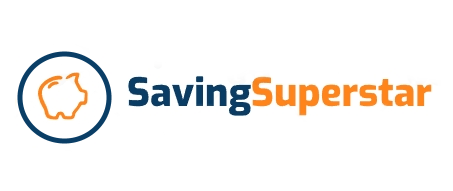“Financial freedom” is a phrase that gets thrown around a lot, often by influencers flashing luxury lifestyles or promising quick wins.
But for most of us, it’s not about retiring at 35 or becoming a millionaire overnight.
It’s about having enough control over your money that it no longer controls you.
Whether you earn £20,000 or £200,000, financial freedom is possible.
It’s not about luck, timing, or privilege—it’s about mindset, consistency, and making your money work for you.
This guide breaks down realistic steps that ordinary people can take to move closer to financial independence, one decision at a time.
What is financial freedom?
For the average person, financial freedom means:
- Paying your bills without having to worry
- Being free from high-interest debt
- Having a cushion for emergencies
- Being able to save and invest for the future
- Having choices—about work, time, and lifestyle
You don’t need to earn a fortune to get there. You just need a plan and a bit of patience.
Step 1: Know your numbers
You can’t take control of your money if you don’t know where it’s going.
Start with a simple financial snapshot.
Write down:
- Your monthly income (take-home pay, benefits, side gigs)
- Your essential expenses (rent/mortgage, bills, groceries, transport)
- Your non-essentials (subscriptions, takeaways, leisure spending)
- Your debts and how much you pay each month
Once you have this overview, you’ll start to see where your money is leaking—and where it can be redirected toward your goals.
Useful tool:
MoneyHelper Budget Planner – A free, easy-to-use tool to build a personalised budget.
Step 2: Clear the expensive debt first
Debt is one of the biggest barriers to financial freedom. It drains your income and delays your goals.
But not all debt is equal.
Focus first on high-interest debts, such as:
- Credit cards
- Store cards
- Overdrafts
- Payday loans
Paying these off quickly saves you money and reduces your monthly outgoings.
Realistic tips:
- Use the avalanche method: Pay off the debt with the highest interest rate first, while paying the minimum on the rest.
- Or try the snowball method: Pay off the smallest balance first for a motivational boost.
- Contact your creditors to request interest freezes or payment plans if you’re struggling.
Free help:
- StepChange Debt Charity – Offers free, impartial debt advice and help setting up a payment plan.
- National Debtline – Offers online tools and expert support via phone or webchat.
Step 3: Build a buffer or emergency fund
Once you’ve tamed expensive debt, the next step is security.
An emergency fund gives you breathing space when life throws a curveball—like your car breaking down or a boiler repair.
Aim to save:
- £500–£1,000 as a starter fund if you’re just getting started
- 3–6 months’ expenses once your finances are more stable
This isn’t about perfection, it’s about peace of mind.
Where to keep it:
- Use an easy-access savings account so you can reach the money when needed
- Check for decent rates at MoneySavingExpert’s savings comparison
Even saving £10–£20 a week makes a difference over time.
Step 4: Spend less than you earn—consistently
The basic formula for financial freedom is simple: earn more than you spend and do something useful with the difference.
It doesn’t require harsh frugality.
It means creating space in your budget consistently so you can save, invest, or reduce debt.
Practical ways to live below your means:
- Review subscriptions: Cut unused services like streaming platforms or other services you don’t use.
- Lower bills: Use comparison tools like Uswitch or apply for schemes like the Warm Home Discount.
- Plan meals and reduce food waste: Sites like Love Food Hate Waste can help you stretch your grocery budget.
- Use cashback sites: TopCashback or Quidco can earn you money on purchases you’d make anyway.
These changes don’t require sacrifice, just awareness and better habits.
Step 5: Start investing—even with small amounts
You don’t need to be wealthy to invest. Thanks to investing platforms and mobile apps, you can get started with as little as £10–£25 a month.
Why it matters:
- Investing gives you access to compound growth—where your money earns money over time
- Long-term investing helps your money beat inflation
- It builds a future income stream so you’re not fully reliant on work or the state pension
Best starting point:
- Open a Stocks & Shares ISA. You can invest up to £20,000 each tax year and any gains are tax-free.
- Use low-cost, diversified index funds or ETFs. These spread risk by investing in hundreds of companies at once.
Beginner-friendly UK platforms:
- Vanguard UK – Low-cost funds with a £100 minimum (or £25/month).
- Freetrade – App-based investing with no commissions on trades.
- Moneybox – Rounds up your spare change and invests it automatically.
Remember: investing is for the long term (ideally 5+ years). Don’t worry about short-term market ups and downs.
Step 6: Protect what you have
Financial freedom isn’t just about growing wealth, it’s also about protecting it.
Here’s what to put in place:
- Insurance: Life insurance (especially if you have dependants), contents insurance, and income protection if you’re self-employed.
- Will: Having a simple will ensures your money and possessions go where you want them to.
- Online safety: Use strong passwords, enable two-factor authentication, and be alert to scams.
These measures create stability so a single setback doesn’t undo your progress.
Step 7: Set goals and automate everything
Your money should have a job. Whether that’s clearing debt, saving for a house, or investing for retirement.
Goals keep you motivated and stop money from disappearing without purpose.
Use tools to make saving and investing automatic:
- Set up standing orders to savings accounts the day after payday
- Use roundup apps that save small amounts without effort
- Enable auto-investing on your investment platform
You don’t have to track every penny. Automation handles the discipline for you.
Step 8: Avoid lifestyle creep
As your income grows, it’s easy to start spending more—nicer holidays, newer tech, takeaway more often.
This is called lifestyle inflation or lifestyle creep.
To stay on track:
- Keep your core spending stable as income rises
- Increase your savings and investing before upgrading your lifestyle
- Avoid comparing your spending to others as you don’t know what debt they’re carrying
Financial freedom comes not from earning more, but from keeping more of what you earn.
Step 9: Review and adjust regularly
Your finances aren’t “set and forget.” Life changes—so your plan should too.
Every 3–6 months:
- Revisit your budget
- Review savings and investment progress
- Adjust goals if your circumstances change
Use this check-in to celebrate progress too—even small wins matter.
Paid off a credit card? Saved £300 for emergencies? That’s real progress.
Freedom is built, not bought
You don’t need to win the lottery to be financially free. You just need to take consistent steps that move you forward.
For the average person, financial freedom isn’t a distant dream—it’s a series of habits that add up over time.
To recap:
- Know your money inside out
- Pay off high-interest debt
- Build an emergency fund
- Spend less than you earn
- Invest early, even in small amounts
- Protect your progress
- Set goals and automate them
- Resist lifestyle inflation
- Review regularly and stay flexible
Start where you are, with what you have. Every pound you save, every debt you reduce, and every habit you improve is a step toward more freedom, security, and choice.

